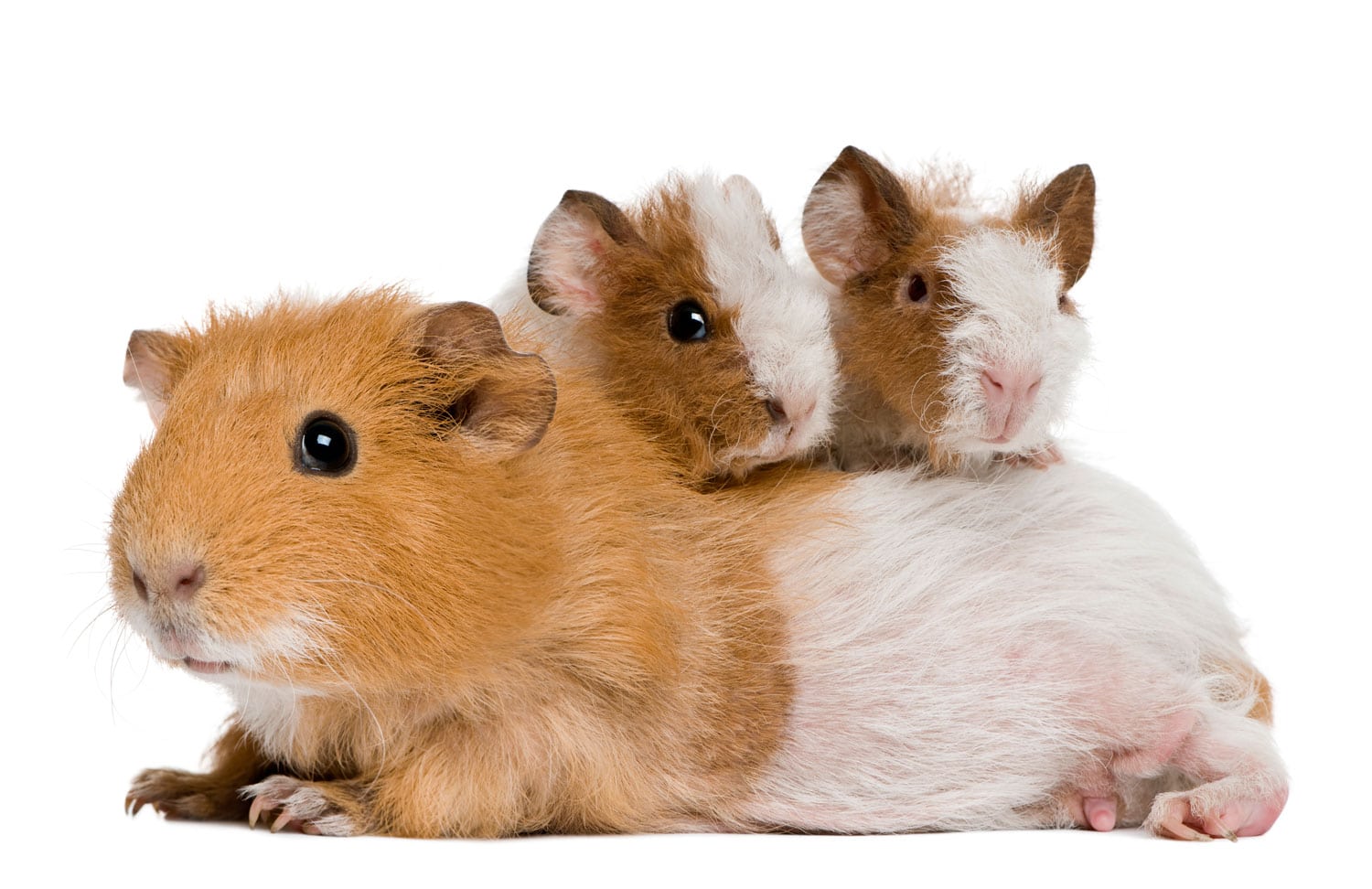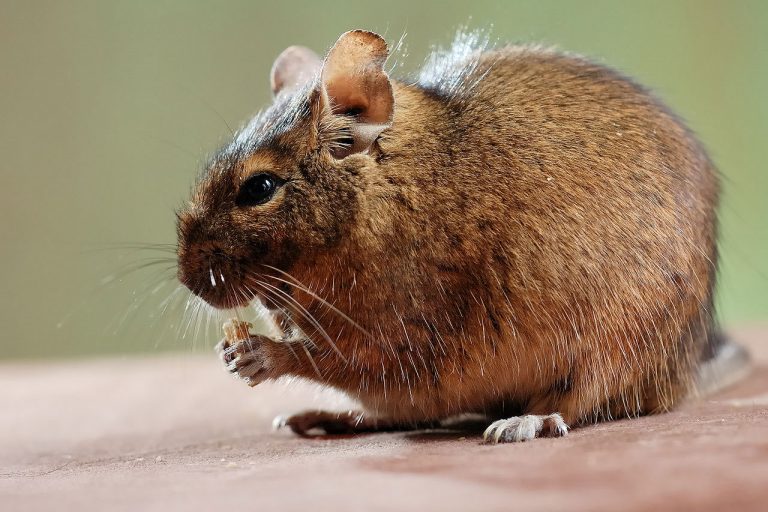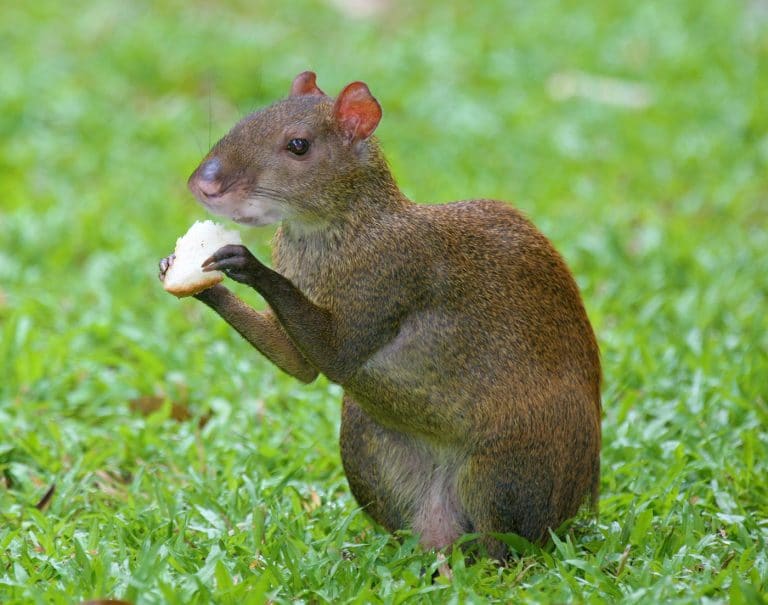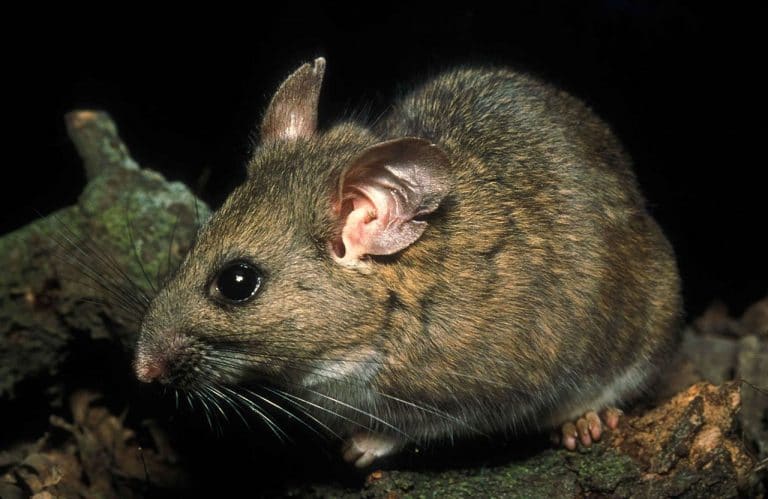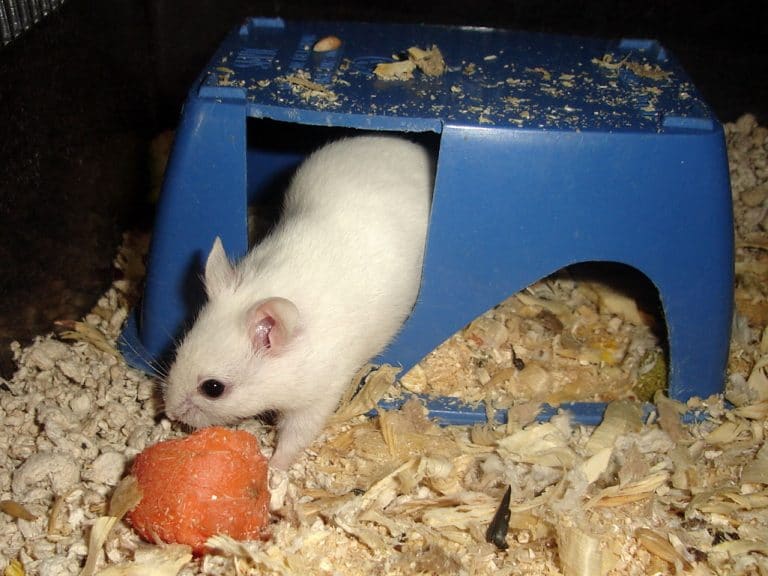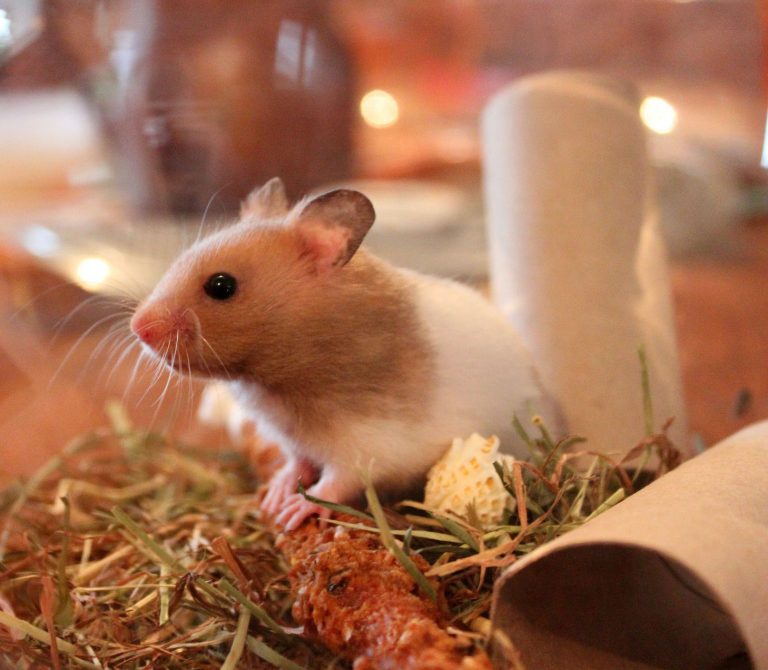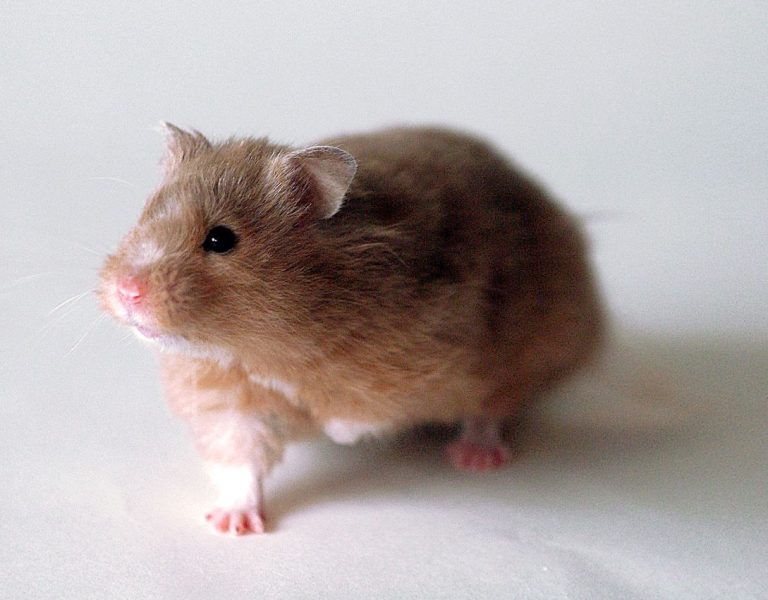Popular Rodent Pets
Hello, all you rodent lovers out there; this article will give you an insight into the enjoyable prospects of keeping these lovely animals as pets at home.
Rodents are actually mammals and belong to the family Rodentia. Their upper and lower jaws contain a pair of incisors that grow continuously as they keep on wearing them out by gnawing. Hamsters, Guinea pigs, beavers, porcupines, squirrels, rats and mice belong to the rodent family. They put their incisors into full use to break into food, gnaw wood and even attack predators. Most rodents are vegetarians but some have diverse diets. You can find many of these small mammals like hamsters, guinea pigs, gerbils, rats and mice in pet shops as they make excellent pets. Most of these are rodents, except possibly the guinea pig whose classification is still under a cloud.
Today, many keep rodents as household pets, but their potential as pets can vary. It is up to you to choose the right animal and enjoy a facile interaction with these fascinating creatures.
Another interesting feature is that some of these animals are excellent pets for your children who want a furry pet for company. There are over 1500 species of rodents, but most people agree the best 3 for your children are the hamster, the guinea pig and the rat, in that order. While the hamsters are small, need limited space and are relatively inexpensive and easy and to care for, the guinea pigs are great pets for Kids Company while watching TV and make adorably vocal squeaking sounds when they give them a snack. On the other hand, the rats dazzle with their physical abilities, intelligence and entertainment value.
Apart from these three, several other rodents are now very popular in the pet trade. Here are details pertaining to a long list of Rodents that make very good pets:
Gerbils
Gerbils come in several colors, are such charming pets and adjust very well to most of their handlers as they bite rarely and are curious animals. Out of all the 90 odd species that exist, the Mongolian gerbil is the only one people rear as pets.
Guinea Pig
The guinea pig (Cavia porcellus), otherwise known as cavy, is a variation of a typical rodent of the Cavidae family of Cavia genes. Regardless of their usual name, they do not belong to either the guinea group or the family of pigs. Guinea pigs are big, weighing 700 to 1200 g (1.5-2.5 pounds), they are 20 to 25 cm (8 to 10 inches) long and have a lifespan of 4 to 5 years, even 8 years.
Hamsters
Hamsters are rodents belonging to the family Cricetidae and the subfamily Cricetinae. These crepuscular (twilight) Hamsters settle underground at day protecting themselves against predators.
Hamster mix containing cracked corn, pellets, seeds and grains is best for your pet. You can easily obtain it is from the pet supply stores.
Interacting with these hamsters adds fun to its breeding.
Chinchillas
The chinchillas belong to the mammal category.
They are a bit bigger and stronger than the ground squirrels.
We find them in general colors like black velvet, white, beige, violet, ebony, sapphire and combinations of these colors. Chinchillas are gentle and loving animals; do take care of them. In case you handle them from infancy, they become quiet and domesticated. Handle them with care; they are excellent pets.
Mouse
A mouse is a tiny mammal associated with the group of rodents. Their peculiar characteristics are small, rounded ears, pointed snout and a long bare tail with no hairs. The general house mouse (Mus musculus) is a well-known variety of mice. Many people domesticate this mouse also. Some varieties of field mice are familiar in a few places.
African Ground Squirrels
Belonging to the Genus xerus, the African Ground Squirrels belong to the taxonomy of squirrels belonging to the minor family Xerinae. Those who have an African ground squirrel as a pet must take the important responsibility of taking care of the animal all their life. You cannot leave them to return to the wild for a successful living because they survive only in the family unit where you reared them.
Emin’s pouched rat
Emin’s pouched rat (cricetomys emini), otherwise called African pouched rat belonging to the muriod super family, is a big rat. It has a close association with the cricetomys gambianus, the Gambian pouched rat. In appearance, Emin’s pouched rats are muscular and very sleek. They have slim looks and are very good climbers. It is possible to tame the Emin’s pouched rats well if handled from birth. While approaching these large rats, do not startle them; be careful.
Flying Squirrels
The scientific name for Flying Squirrels is Petauristini or Pteromyni; these belong to the 44 varieties of the tribes of squirrels. Unlike bats or birds, they cannot really fly high; they glide between trees. Flying squirrels have a furry elongated membrane that extends from its front leg to the back legs. When these flying squirrels want to escape fast, they stretch their legs and arms out and make use of the membrane that acts like a parachute. When acquainted from an early stage, the flying squirrels become very familiar with the owner, climbing on him and playing with him or even sleeping in his pocket.
Campbell’s Dwarf Hamsters
Campbell’s Dwarf Hamsters have a peculiar penchant for biting, and this is reason to handle them differently. They sport different colors including the gray form, albino fawns, black hide whites and a type of mottled color. Even though you can get dwarf hamster cages in various sizes, pick the biggest one that you can afford. While choosing a cage, be certain that their bar linings are close enough to prevent them from forcing themselves out.
Capybaras
Among the varieties of rodents, Capybaras (capybara hydrochoerus) are the biggest; almost a man’s weight. These extraordinary animals, like pigs have, largely adapted to an aquatic style of life; they mate even in water. The head of the capybara is short whilst the body is barrel-shaped. Reddish-brown fur covers the upper part of its body and gradually fades to yellowish-brown beneath its body. We see the sweat glands on the surface of the hairy parts of its skin. Capybaras love social connections with their family members, people, or at times other type of animals. Provide a capybara a companion or spend quality time with your pet.
Chinese Hamster
The Chinese Hamster Cricetulus is a charming being; and just like a harvest mouse, its habits appeal to the fingers of those who handle it,. It is a magnificent pet, very intelligent and has a very good personality. The body of a Chinese hamster appears ‘thin and long’ when compared to the other hamsters. The tail is comparatively long (for a hamster). A tiny slim hamster attaining the size of an adult is almost 4 inches (10cm) long. Once domesticated, it is a pleasure to manage the Chinese hamster. A tamed Chinese hamster enjoys climbing on its caretaker’s sleeves or sitting on his/her hands.
Golden Hamster
Hamster Mesocericetus auraturs or the Golden Hamster or Syrian Hamster, belongs to the subfamily of the rodent Cricetinae. They are at risk in the wild; their numbers are reducing because of intentional devastation as well as farming of their habitat by human beings. The length of an adult animal varies from 5 to 7 in (13 to 18 cm), they live up to 2 or 3 years. Similar to most of the subfamily, the golden hamsters have cheeks with pouches that expand until their shoulders. These hamsters are larder hoarders in the wild; they use their cheek pouches to transport food to their burrows. The strongest sense of a Syrian hamster is smell; their respiratory system is very delicate. Keeping their environment clean needs special attention. Before handling them, always wash your hands.
Patagonian Mara
Mara Dolichotis patagonum, is comparatively a huge rodent of the Mara genus (dolichotis) which they otherwise call Patagonian Cavy, dillaby or Patagonian. The Patagonian Mara looks like The Patagonian jackrabbit. Its long limbs and ears characterize this breed. Its forelimbs are shorter than but not as muscular as its hind limbs that have a longer radius. The feet are hoof-like. Cavies delivered in captivity become human friendly. If they have not mingled with humans, they turn nocturnal to stay away from human interaction.
Degu
People, at times, consider the Degu as a brush-tailed rat. Besides, they have named it the common Degu, to distinguish it from the associate members of the species of Octodon Degu, whose members also go by the name “Degu”, even though they have other names. This small Degu has a body of length 25 to 31 cm (9.8 – 12.2”). It weighs 170 to 300 gm (6.0 to 10.6 Oz). The Degu has yellow, brown fur on top and creamy-yellow underneath; around the eyes, it is yellow and it has a lighter shade round the neck. Its tail is thin and long. The tip of the tail has a black tuft. Its toes are light gray and ears sparsely furred. The tamed degus let you to lift them up by scooping them in cupped hands by placing one hand beneath each side of their body.
Prairie Dogs
People refer to Prairie dogs as burrowing rodents. They occupy huge colonies in the grassy areas of Western and Central North America. At an average, these heavy-bodied rodents, grow to a length of 30 to 40 cm (12 to 16 inches), this includes the tail. The rodent’s weight is around 0.5 to 1.5 Kg (1 to 3 lbs). Sexual dimorphism in the prairie dog’s body mass varies from 105 to 136% between sexes. Prairie dogs are very friendly and clever, even though they may bite in play. When you have a prairie dog as a pet you must totally commit to it; they do not like you sharing their love with your peers.
African Dormice
African dormice (Graphiurus spp) are tiny nighttime rodents; they are now infrequent in laboratory settings. These African Pygmy Dormice otherwise called micro squirrels are lovely, charming and dazzling animals for you to have. The body length of these small rodents measures from 6 to 19 cm (2.4 to 7.5in), They weigh from 15 to 180 g (0.53 to 6.350z). They normally look like a mouse; the difference is their furry, but not scanty tail. You cannot handle them easily, because they are very fast; still it is possible to scoop them on the day when they are dopey, to enable you to clean the vivarium.
Agouti
Agouti belonging to the genus Dasyprocta (punctata) is a variety of tropical American rodents that have 11 types. There are a number of them in central and South America. The fur on them contains pigments in a particular design of which every hair has many bands of dark and light pigments with the tip, black. An agouti weighs 6 kg (13 lbs); its body is long 76 cm (2.5 feet). They have heavy buttocks and big heads with slim legs. Agoutis are very loving and playful. Most of them love cuddling.
Acacia Rats
The Rodent, Acacia rats, belonging to the family of Muridae, is comparatively unusual as pets in the UK. Ongoing imports, serving the increasing number of breeders is increasing their popularity. They live for more or less 3 years; some even live for even 5 years. They live either in harmony in colonies in a mixed sex. The acacia rats grow to a length of 12 to 16 cm, with a tail length 13 to 21 cm and a weight 50 to 100 g. These medium size rodents have long tails of brown. You can handle and tame them. For those who like to own rodents, this stunning curious creature, the Acacia rat is a good pet.
Bushy-Tailed Jird
This bushy-tailed jird, Sekeetamys calurus is a variety of rodents of the Muridae family. In the genus Sekeetamys, the Bushy-tailed jird is the solitary member. They are almost similar in size to the Mongolian Gerbils but thinner and longer in build. Their whiskers are very conspicuous; their faces are long and pointed. The most notable feature is their tail. The length of their body and head is 9.8 to 12.8 cm; and tail grows to 11 to 16.4 cm. When in captivity, they weigh from 80 – 95 gm This Bushy –tailed jirds are easy to tame, they hardly bite you, and they are very friendly and on occasions, take food from your hands.
Greater Egyptian Jerboa
This undersized Jerboa appears as a perfect combination of assorted spare parts of animals, yet it splendidly adjusts to harsh surroundings similar to the Sahara and Gobi Deserts. The Greater Egyptian Jerboa (jaculus orientalis) is a variety of rodents of the family Dipodidae. The hind legs and feet of the Greater Egyptian Jerboa are very long, like that of the kangaroo, even though their forelegs are comparatively small, bearing full-grown claws meant for sifting through sand in search of food. It bears a coat colored pale/ sandy, a long tail having at its end a tuft of fur, ears and large eyes that help to keep them away from predators and notice fast movements. They have a 7 to 15 cm long body. It is too early to decide whether these Jerboas are ideal as pets; they stay secretive and very wary.
Fancy Rat
The most common variety among the pet rats is the domesticated brown hued rat, called fancy rat (Rattus norvegicus); their huge resource of energy makes it a real entertaining to see them. These fancy rats find pleasure in running on the exercising balls as well as on wheels. These inquisitive and pleasant fancy rats enjoy having fun, take delight in interacting and playing with their owners. Size: body 6 – 11 inches; tail 7 – 9 inches, weight: 6-18 ounces. A few males weigh up to 2 pounds, average lifespan: 1.5 to 3 years. Persistence and endurance will go a long way in handling your fancy rats. Use low volume comforting tones while talking to these pets because they have an exceptional hearing ability and frighten easily,
Harvest Mouse
The harvest mouse, Micromys minutes, the tiny British rodent is largely inconspicuous to the human eye. It is natural to small habitats, not ideal at all times, although adaptable, highly opportunistic and intelligent. Contrary to the other varieties of the British mice their nose is blunt, eyes small and ears with tiny hairs and comparatively smaller; their tail is prehensile, of length equal to the head and body fur is russet orange and white underside. It is about 50-70 mm long and weighs 4-6 kg.
Nile Rat
The Nile Rat also called African Grass Rat or Kusu rat is a big one and convenient for breeding and keeping in custody. The body of the Nile Rat is fat and short, with a stout and the body colored tawny to dark gray-brown or brown in color. Black and yellow strongly ticked hairs cover its sides. Even though they are not aggressive, they are very easy to handle and may bite only if troubled.
Short-eared Elephant Shrew
Macroscelides Proboscideus or the short-eared elephant shrew, otherwise known as round-eared elephant shrew or as round-eared sengi, belonging to the family of Macroscelididae, is a variety of elephant shrew. There is only one of its varieties in this genus, and this condition they call monotypic. Elephant shrews are four-legged, tiny, insectivorous mammals similar to the opossums or rodents having lengthened snouts, tails with scales and comparatively long legs to suit their size that takes care of the hopping movement style similar to the rabbits. Their size differs from 19 cm to nearly 30 cm, and weigh between 50 g to 500 g. The average size of the short-eared elephant shrew is 150mm (5.9”). The fur on the body is grayish brown and the underside is white. It has its nostrils at the end of the flexible snout. They are dull as pets; they are timid and mate for life. A few states prohibit capturing and caging such wild animals. You require a special license in other states.
Siberian Chipmunk
The Siberian chipmunks are typical for having five dark and white stripes, 18 to 25 cm long on their backs; the middle stripe is continuous along the tail. The weight of an adult is normally 50 to 150 g that varies based on the time of the year. When compared to the Sciuridae rodents, like the Red Squirrel, the Siberian chipmunk is comparatively small. Chipmunks have lasting memories, and are very timid. In case you scare them, they will bear it in mind and refuse you, until you regain trust in them. Initiate your intimacy with them by feeding them through the bars of the cage and gradually feed them from the palm of your hand from inside the cage.
Zebra Mice
The Zebra mice belong to the genus of murine rodents hailing from Africa; they are also at times called striped grass mice. They have black stripes that extend from head to tail on their dorsal surface and either side, with a brownish body. Their length ranges from 18.5 – 29 cm (7.3 – 11.4 in) almost half of which is the tail. They weigh 18 – 70 g (.63 – 2.47 oz). A few zebra mice adjust well to handling, but an expert in exotic rodents is best to handle them. With age, a few zebra mice grow more attached to their owners, more so in case of the death of a cagemate.

Having discovered a fondness for insects while pursuing her degree in Biology, Randi Jones was quite bugged to know that people usually dismissed these little creatures as “creepy-crawlies”.

